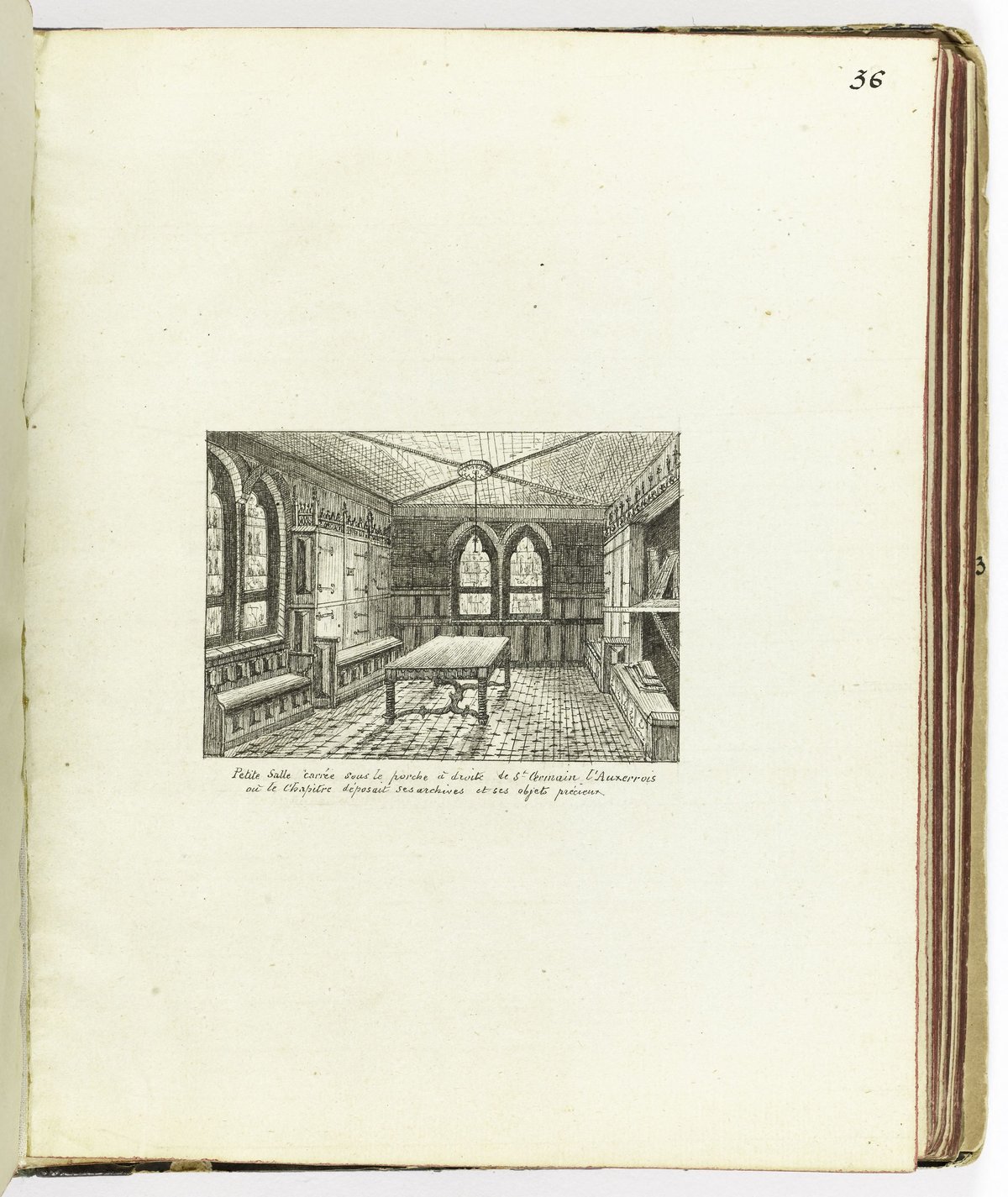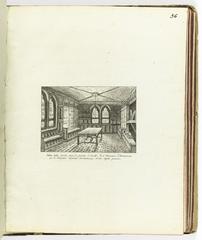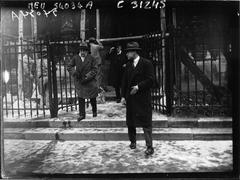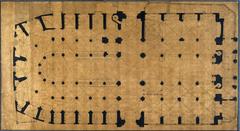
Saint-Germain l’Auxerrois Paris: Visiting Hours, Tickets, and Historical Sites Guide
Date: 14/06/2025
Introduction
Saint-Germain l’Auxerrois stands as a monumental testament to Paris’s royal, religious, and artistic heritage. Located in the 1st arrondissement, just opposite the Louvre Museum, this church is often called the “parish of the kings of France.” It has witnessed centuries of history, from its Merovingian origins to its present-day role as both a place of worship and a cultural landmark. With its blend of Romanesque, Gothic, Flamboyant Gothic, and Renaissance architecture, Saint-Germain l’Auxerrois invites visitors to explore the layered stories of Paris’s past and experience the living traditions of its vibrant parish community.
This comprehensive guide covers everything you need to plan your visit: opening hours, ticketing, guided tours, accessibility, major highlights, nearby attractions, and essential travel tips. Whether you are a history enthusiast, architecture lover, or simply exploring Paris’s cultural treasures, Saint-Germain l’Auxerrois is an essential stop on your Parisian journey.
For official updates and further details, consult the Saint-Germain l’Auxerrois official website, Travel France Online, and Sortir à Paris.
Quick Facts & Contents
- Location: 2 Place du Louvre, 1st arrondissement, Paris
- Nearest Metro: Louvre-Rivoli (Line 1), Pont Neuf (Line 7)
- Admission: Free (donations welcome)
- Highlights: Flamboyant Gothic porch, historic bell “Marie,” stained glass, organ recitals
- Nearby: Louvre Museum, Seine River, Palais Royal
Contents:
- Key Visitor Information (Hours, Tickets, Accessibility)
- Historical Overview
- Architectural and Artistic Highlights
- Royal and Artistic Connections
- Religious Functions and Community Life
- Notable Events & Anecdotes
- Travel Tips and Nearby Attractions
- Frequently Asked Questions (FAQ)
- Visuals & Virtual Resources
- Conclusion & Call to Action
1. Key Visitor Information
Visiting Hours and Tickets
- Standard Hours:
- Monday to Saturday: 10:00 AM–6:00 PM
- Sunday: 1:00 PM–6:00 PM
- (Some sources report opening from 8:00 or 9:00 AM; check the official website for seasonal variations and updates.)
- Admission: Free for all visitors. Donations are encouraged for restoration.
- Guided Tours: Available in multiple languages; can be reserved via the official website or local tour offices.
- Photography: Non-flash photography is generally permitted except during services and in designated chapels.
- Accessibility: Wheelchair access is available at the main entrance, though some interior areas may have limited accessibility due to the historic structure.
(Paris.fr, Sortir à Paris, Travel France Online)
2. Historical Overview
Saint-Germain l’Auxerrois traces its roots back to the Merovingian era, with archaeological remains confirming a Christian presence since at least the 6th century. Tradition links the church’s foundation to Saint Germain, Bishop of Auxerre, and later to Saint Landry, whose burial here made the site a destination for pilgrims (saintgermainlauxerrois.fr).
The church has undergone several major reconstructions:
- Original Structure: Possibly circular and built under Saint Landry (6th century).
- Early Medieval Phase: Rebuilt under King Robert II (11th century).
- Current Building: Construction began in the 13th century, culminating in the 15th-century Gothic expansion and later Renaissance additions (World History Edu).
Throughout its history, Saint-Germain l’Auxerrois served as the parish of the monarchy, hosting royal ceremonies and the burial of artists and architects who worked for the French court.
3. Architectural and Artistic Highlights
Exterior Features
- Flamboyant Gothic Porch:
Completed in 1439 by Jean Gaussel, the west-facing porch is a masterpiece of Flamboyant Gothic style. Ornate arches, a balustrade, and a wealth of sculpted figures set this entrance apart (Travel France Online). - Bell Towers:
The south tower (12th century) houses “Marie,” the bell historically rung to signal the St. Bartholomew’s Day Massacre. The 19th-century north tower was added to harmonize with the adjacent city hall (World History Edu). - Sculptures and Gargoyles:
Statues of saints, whimsical figures, and fantastical gargoyles adorn the façade and balustrade (Visites Guidees).
Interior Features
- Nave, Choir, and Transept:
The nave and choir reflect a blend of Gothic and Renaissance influences, with ribbed vaults and vibrant stained glass (Sortir à Paris). - Chapels:
Notable chapels include the Chapelle du Saint Sacrement (13th century) and Chapelle de la Vierge (14th century), featuring polychrome statues and retables (France Voyage). - Stained Glass:
The church is renowned for its Renaissance and 16th-century stained glass, with 19th-century restorations preserving much of its luminous character (ZigZag On Earth). - Woodwork and Furnishings:
The 17th-century choir stalls and pulpit display exquisite woodcarving (Two in France). - Historic Organ:
The organ, built by François-Henri Clicquot in 1771 and later restored, remains central to the church’s musical life (Orgues de Paris).
4. Royal and Artistic Connections
As the parish church of the Louvre Palace, Saint-Germain l’Auxerrois was deeply intertwined with the French monarchy. Kings, queens, and courtiers attended major liturgical events here. The church’s close association with artists working at the Louvre earned it the nickname “the church of artists,” and many renowned figures are buried in its chapels (saintgermainlauxerrois.fr, France Travel Planner).
5. Religious Functions and Community Life
An active parish, Saint-Germain l’Auxerrois hosts regular Mass, sacraments, and special ceremonies. The annual Ash Wednesday service honors deceased artists, reflecting its enduring ties to Paris’s cultural life. The church also welcomes concerts, art exhibitions, and community events throughout the year (France Travel Planner).
6. Notable Events & Anecdotes
- St. Bartholomew’s Day Massacre:
On August 24, 1572, the ringing of “Marie” signaled the start of the massacre of Huguenots in Paris—a defining and tragic episode in French history (History Today). - French Revolution:
The church was desecrated, closed, and repurposed as a municipal office and storage space. Restoration in the 19th century revived its religious and artistic significance (saintgermainlauxerrois.fr). - Artistic Burials:
Notable artists, architects, and musicians connected to the royal court are buried here, cementing the church’s legacy as a sanctuary for Paris’s creative elite.
7. Travel Tips and Nearby Attractions
- Combine your visit with the Louvre Museum, Palais Royal, the Seine River banks, and nearby churches such as Sainte-Chapelle and Saint-Eustache (Sainte-Chapelle, Saint-Eustache).
- Transportation:
Metro: Louvre-Rivoli (Line 1), Pont Neuf (Line 7). Numerous bus lines serve the area (RATP Paris Metro Map). - Amenities:
Restrooms available at the Louvre or nearby public facilities. Cafés and shops line the surrounding streets. - Best times to visit:
Early mornings or late afternoons, especially outside peak tourist seasons and major holidays, offer a quieter and more contemplative atmosphere. - Accessibility:
Some entry steps may present challenges for wheelchair users; staff assistance is available.
8. Frequently Asked Questions (FAQ)
Q: What are the opening hours of Saint-Germain l’Auxerrois?
A: Typically, Monday to Saturday 10:00 AM–6:00 PM, Sunday 1:00 PM–6:00 PM. Check the official website for updates.
Q: Is admission free?
A: Yes, entry is free for all visitors; donations are encouraged.
Q: Are guided tours available?
A: Yes, multilingual guided tours and audio guides can be booked in advance.
Q: Is the church accessible for wheelchair users?
A: Partial accessibility is available; assistance can be provided at the main entrance.
Q: Can I take photos inside?
A: Non-flash photography is permitted except during services and in certain chapels.
Q: What is the best way to reach the church?
A: Metro (Louvre-Rivoli, Pont Neuf), public buses, walking, or Vélib’ bikes.
9. Visuals & Virtual Resources
- Official Virtual Tour and Photos
- High-quality images with descriptive alt text for accessibility, such as “Saint-Germain l’Auxerrois stained glass windows, Paris historical site.”
10. Conclusion & Call to Action
Saint-Germain l’Auxerrois is a captivating destination where Paris’s royal grandeur, religious tradition, and artistic legacy converge. Its central location, free admission, and wealth of historical treasures make it an essential stop for both first-time visitors and seasoned travelers. Whether attending a concert, joining a guided tour, or simply reflecting in the light of its stained glass, your visit to Saint-Germain l’Auxerrois will offer a profound connection to Paris’s enduring spirit.
Plan your visit today:
- Check the official website for the latest information on hours, guided tours, and events.
- Download the Audiala app for curated audio tours and travel tips.
- Follow us on social media for up-to-date guides, event announcements, and exclusive content.
Summary
Saint-Germain l’Auxerrois is more than a historical monument: it is a living chronicle of Paris, uniting centuries of faith, artistry, and political drama. Its harmonious blend of architectural styles, royal connections, and vibrant community life make it a must-visit for anyone seeking to understand the cultural heartbeat of Paris. For the most current information, consult the official website and reputable travel guides, and enhance your exploration with the Audiala app.
Sources
- Saint-Germain l’Auxerrois: Visiting Hours, Tickets, and Historical Guide to Paris’s Royal Church, 2024, saintgermainlauxerrois.fr
- Saint-Germain l’Auxerrois: A Comprehensive Guide to Architecture, History, and Visiting Information in Paris, 2024, Feverup, Sortir à Paris, World History Edu, Sortir à Paris, World History Edu
- Saint-Germain l’Auxerrois: Visiting Hours, Tickets, and Historical Significance in Paris, 2024, France Travel Planner, France-Voyage, ZigZag On Earth, France-Voyage, ZigZag On Earth
- Saint-Germain L’Auxerrois Visiting Hours, Tickets, and Visitor Guide to Paris Historical Sites, 2024, Paris Tourist Office, Paris.fr, History Today, Paris.fr, History Today







































































































































































































































